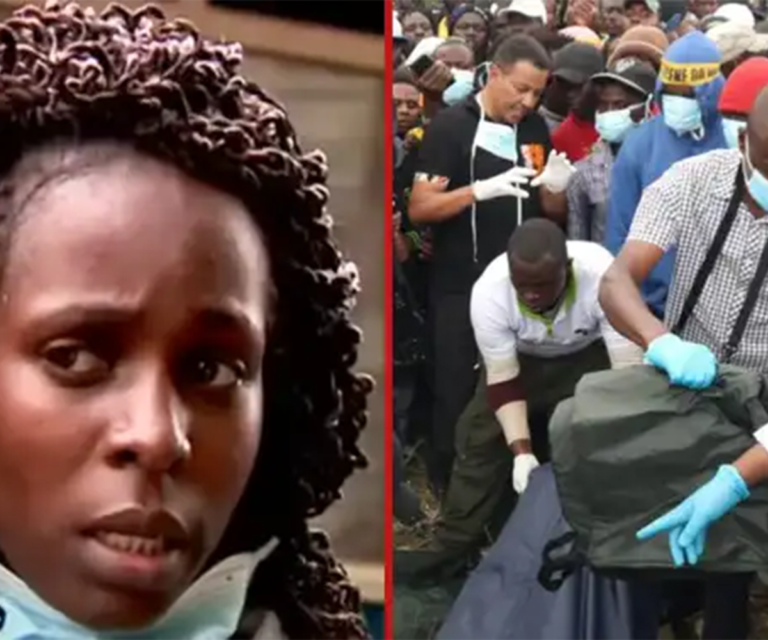Within Nairobi’s crowded informal settlement of Mukuru Kwa Njenga, a devastating and unprecedented occurrence has profoundly impacted the populace. On July 12, 2024, six bodies were unearthed at a local refuse site, following the guidance of a resident’s vivid dream. This revelation has sparked widespread astonishment, fury, and a fervent plea for accountability and fairness.
The chain of events commenced with a woman’s intense dream, envisioning her sister’s remains at a specific dumpsite in Mukuru Kwa Njenga slum. Motivated by the unsettling nature of her dream, she rallied some neighbors to join her in scouring the area for any trace of her sibling.
Upon arrival at the dumpsite, the woman and her companions were appalled to stumble upon a corpse shrouded in a sack, a tactic often linked with clandestine disposal of bodies. Their quest unveiled five more bodies, each similarly concealed and discarded. This gruesome revelation sent shockwaves of terror and indignation across the neighborhood.
The unearthing has profoundly disturbed the inhabitants of Mukuru Kwa Njenga village, with the community grappling with the dismay of discovering multiple bodies in such close proximity to their residences. An air of trepidation lingers as individuals ponder the identities of the deceased and the circumstances surrounding their demise. Numerous residents have voiced their fury and demanded prompt intervention from the authorities to probe the incident.
Local leaders and residents have urged for a comprehensive inquiry into the occurrence, seeking answers about the victims’ identities, how they ended up at the dumpsite, and who is culpable for their deaths. The community is especially anxious about the prospect of these bodies being linked to ongoing concerns such as gang violence, extrajudicial killings, or other criminal activities prevalent in the vicinity.
Law enforcement and relevant agencies have initiated an investigation to ascertain the identities of the deceased and the events leading to their deaths. The primary focus lies in identifying the victims through forensic examination and contacting families with missing loved ones. Efforts are also underway to gather any potential witnesses or insights from the community that could illuminate the circumstances surrounding the bodies’ presence at the dumpsite.
This tragic discovery has spotlighted the broader challenges confronted by residents of informal settlements like Mukuru Kwa Njenga. These areas frequently contend with soaring crime rates, poverty, and inadequate access to justice. The incident underscores the imperative for enhanced security and support services in these communities to avert such calamities and ensure swift dispensation of justice when they transpire.
The revelation of the corpses in Mukuru Kwa Njenga has deeply unsettled the community. While the inquiry progresses, inhabitants hold onto optimism for resolutions and fairness for the victims. The occurrence acts as a glaring reminder of the susceptibilities encountered by individuals residing in informal settlements and the pressing necessity for structural modifications to guarantee their security and welfare.
The lady’s vision, which triggered the finding, persists as a chilling and significant component of this calamitous tale, emphasizing the enigmatic and frequently incomprehensible essence of such incidents.

